Why the Right Trash Can Makes a Difference
Trash cans might seem like minor items, but they play a vital role in maintaining cleanliness, efficiency, and even style. The global garbage cans market is projected to reach $3.2 billion by 2031, highlighting their importance in everyday life.
Choosing the right trash can improves waste management, supports recycling efforts, and enhances the aesthetics of a space. Let’s explore the different types of trash cans and how to select the best one for your needs.
Different Types of Trash Cans for Various Needs

1. Commercial Trash Cans: Essential for Businesses
Commercial trash cans are built to handle large volumes and withstand heavy use. Typically made from durable materials like stainless steel or heavy-duty plastic, these trash bins are ideal for high-traffic areas such as lobbies, cafeterias, and restrooms. With the garbage cans market expected to grow at a rate of 9.12% from 2024 to 2031, businesses can benefit from investing in quality waste management solutions.
Best Features for Commercial Trash Cans:
• Durability: Long-lasting materials that endure frequent use.
• Capacity: Larger sizes to reduce the need for constant emptying.
• Ease of Access: Often equipped with wide openings for quick disposal.
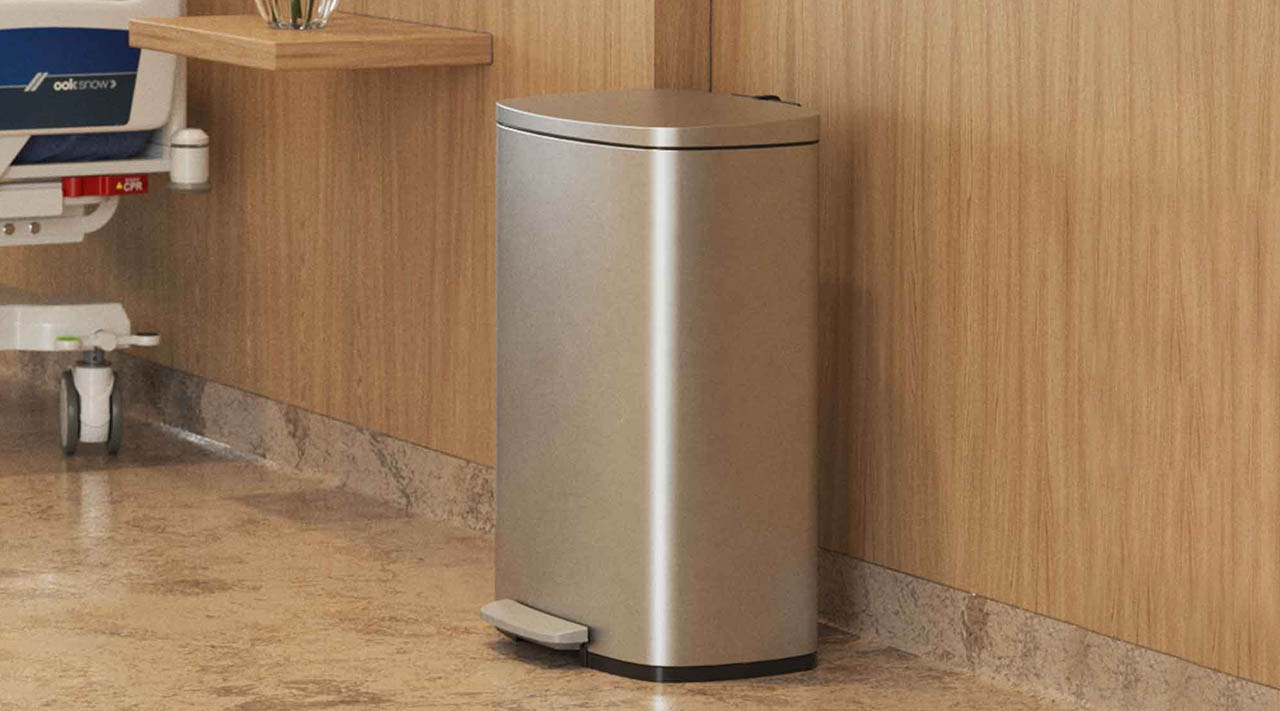
2. Hospitality Trash Cans: For a Clean and Tidy Space
Designed to fit seamlessly into busy environments, hospitality trash cans come in various styles and sizes to suit each room. From flip-top bins with odor control to compact bathroom wastebaskets, these cans combine functionality with design. Choose sizes based on waste output, and consider features like lids for odor control.
Types of Hospitality Trash Cans:
• Step-on Bins: Odor control and hands-free options.
• Bathroom Wastebaskets: Compact and discreet.
• Outdoor Bins: Larger sizes for yard waste.
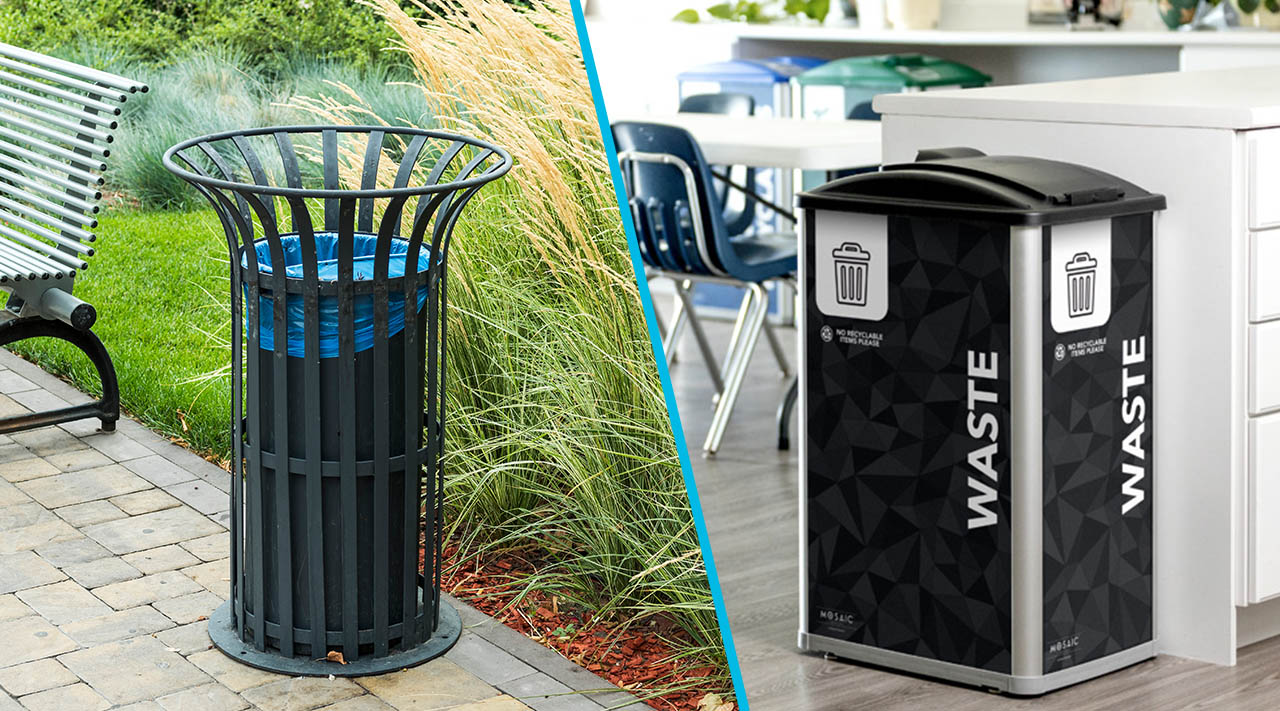
3. Indoor vs. Outdoor Trash Cans: Choosing the Right Fit
Indoor and outdoor trash cans are designed for different environments. Outdoor trash cans are often made from weather-resistant materials like metal or heavy-duty plastic to withstand elements like rain, sun, and wind. They’re ideal for parks, sidewalks, and backyards.
Key Differences:
• Outdoor Cans: Durable materials, often with locking lids.
• Indoor Cans: Focus on aesthetics and compact design.
Choosing between indoor and outdoor trash cans depends on location and durability requirements.
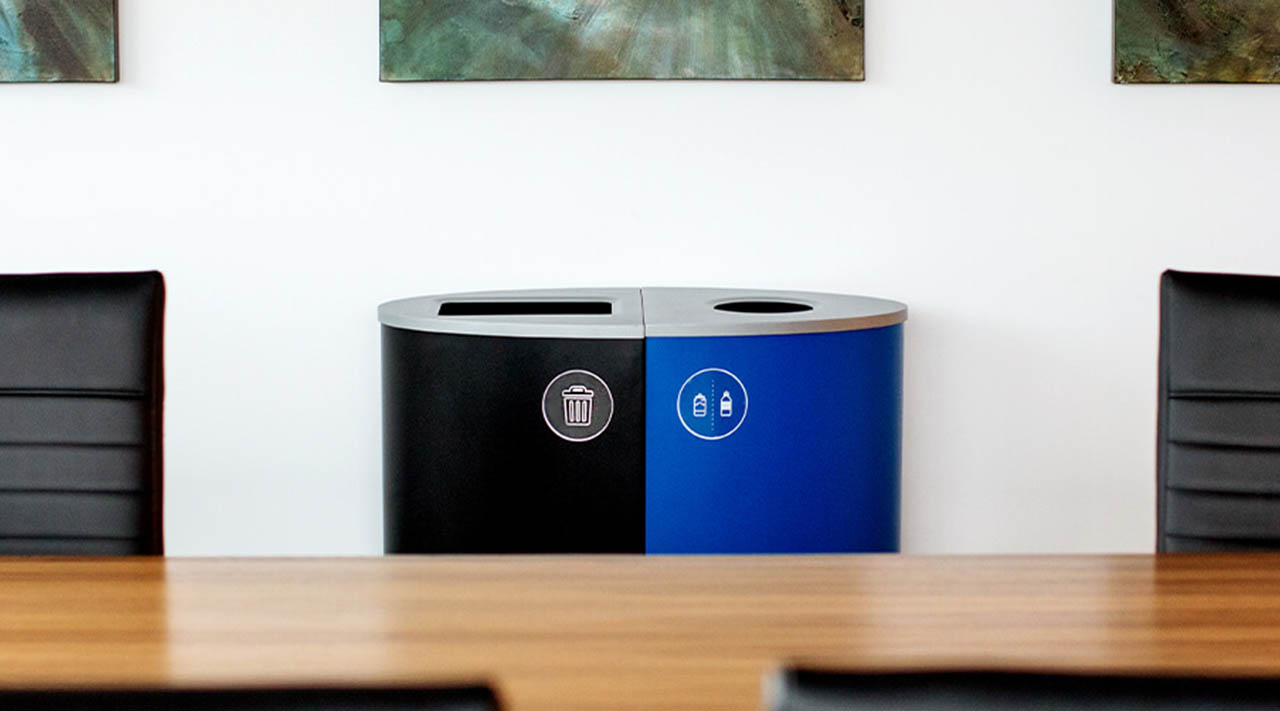
4. Specialty Trash Cans: Decorative and Space-Saving Options
Specialty trash cans offer solutions for unique needs, such as decorative bins that enhance a room’s design or space-saving models that fit small apartments or offices. Some specialty cans feature pedal-operated lids or recycling bins to streamline waste management.
Popular Specialty Options:
• Decorative Cans: Stylish materials and finishes.
• Space-Saving Models: Slim or corner designs.
• Pedal-Operated Lids: Hands-free convenience.

5. Recycling Bins and Multi-Stream Solutions
Commercial recycling bins help separate waste effectively, often featuring color-coded lids or labels for easy sorting. Multi-stream solutions integrate multiple compartments in one unit, making it simple to sort paper, plastics, and organic waste in one place.
Benefits:
• Eco-Friendly: Supports recycling initiatives.
• Efficient Sorting: Reduces waste contamination.
Integrating recycling bins into daily routines reduces environmental impact, aligning with global efforts to conserve resources.
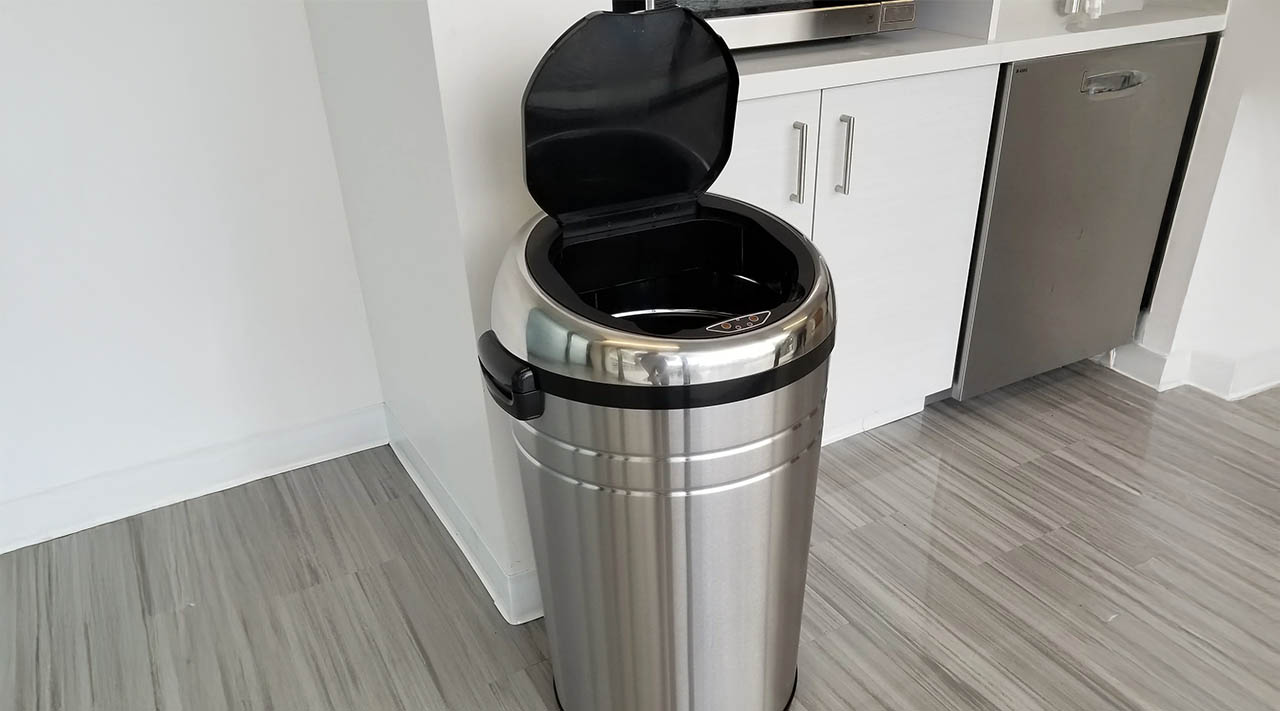
6. Innovative Trash Cans: Sensor, Step-On, and Touchless Models
Modern trash cans often include innovative features like sensor lids, step-on pedals, and touchless technology for a hygienic, convenient experience. Sensor trash cans, for instance, open automatically when motion is detected, minimizing contact with surfaces.
Advantages of Innovative Trash Cans:
• Sensor Lids: Hands-free and hygienic.
• Step-On Pedals: No need to touch the lid.
• Touchless Models: Ideal for kitchens and bathrooms.
These features enhance convenience, making waste disposal a more seamless process.
Material Matters: Choosing the Right Trash Can Material
The material of a trash can impacts its durability, weight, and eco-friendliness. Here’s a quick guide to common materials used:
Metal Trash Cans
Metal trash cans, often made from steel or aluminum, are known for their durability and sleek appearance, making them ideal for high-traffic areas. In the U.S., the recycling rate for metals varies; for instance, lead has a recycling rate of about 69%, showcasing its eco-friendly benefits.
• Pros: Durable and sustainable.
• Cons: Heavier and may be more expensive.
Plastic Trash Cans
Plastic trash cans are lightweight and versatile, commonly used in both residential and commercial settings. However, the recycling rate for plastics in the U.S. is relatively low, with only 13.6% of plastics being recycled in 2018.
• Pros: Affordable and easy to clean.
• Cons: Less durable in extreme weather.
Concrete Trash Cans
Concrete trash cans are often found in public spaces due to their durability and resistance to vandalism. These are ideal for fixed locations where waste management requires a permanent solution.
• Pros: Extremely durable and stable.
• Cons: Heavy and less portable.
Eco-Friendly Options: Biodegradable Plastics and Recycled Materials
With increasing demand for sustainability, eco-friendly trash cans made from biodegradable plastics or recycled materials are becoming more popular. Bamboo and natural fibers are also used in indoor settings, offering a renewable option for light waste disposal.
• Pros: Environmentally friendly.
• Cons: Limited durability for heavy-duty use.
Smart Features in Modern Trash Cans
Today’s trash cans offer smart features that enhance usability and hygiene, catering to contemporary needs:
• Locking Lids: Prevents spills and keeps waste secure.
• Odor Control: Charcoal filters or deodorizing compartments reduce odors.
• Bag Management Systems: Built-in dispensers simplify bag changes.

Dual Compartments for Waste and Recycling
Dual-compartment trash cans separate waste and recyclables within a single unit, streamlining the sorting process and making it easy to stay eco-friendly.
• Best For: Homes, offices, and public spaces.
• Benefit: Simplifies recycling and reduces landfill waste.
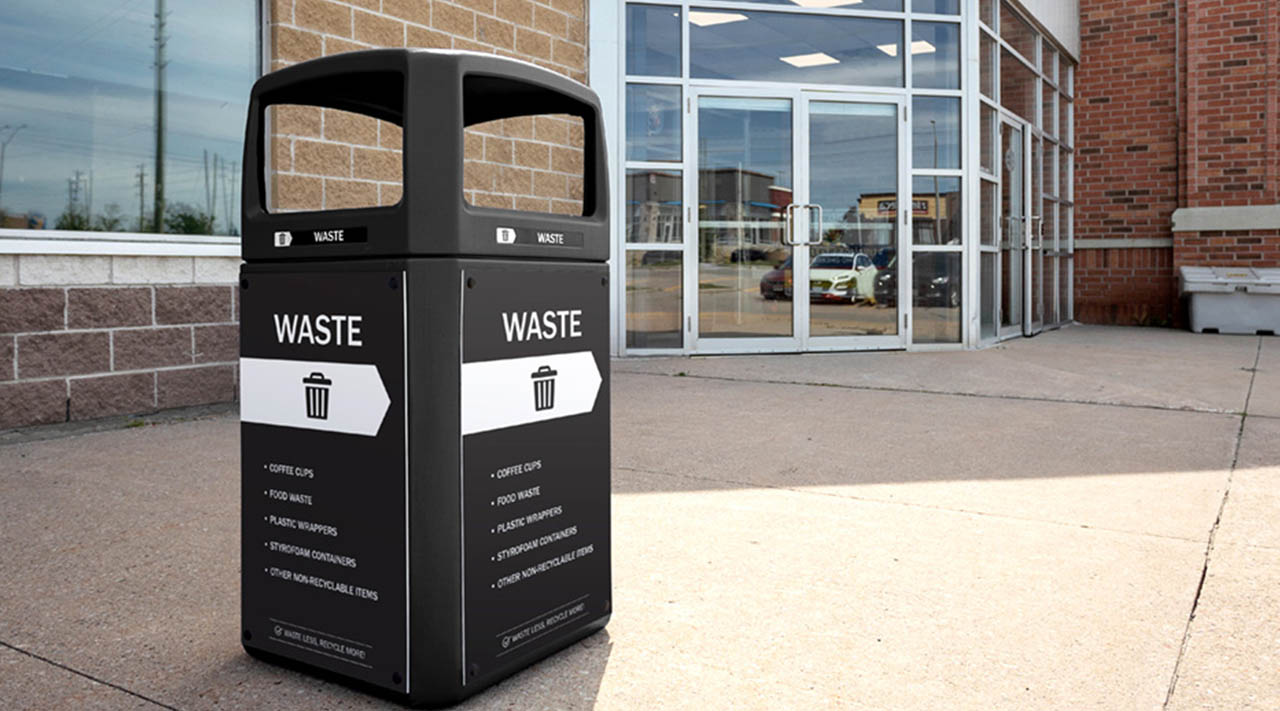
Different Sizes of Trash Cans
Choosing the right size trash can is just as important as selecting the right style or material. Trash cans come in a wide range of capacities to support different environments, waste volumes, and usage patterns. Whether you’re outfitting a busy commercial space, a hotel room, or a residential kitchen, understanding the different types of trash cans by size ensures efficient waste management and fewer interruptions throughout the day.
Small Trash Cans (1–4 Gallons)
Small trash bins are ideal for bathrooms, bedrooms, offices, and other low-waste areas. These compact trash bin options take up minimal space while offering enough capacity for light daily use.
Best For:
• Bathrooms
• Personal office spaces
• Hotel rooms and hospitality settings
Why Choose:
• Space-saving
• Easy to clean and maintain
• Available in decorative and minimalist styles
Medium Trash Cans (5–13 Gallons)
Medium-sized trash cans are the most common type for kitchens, workspaces, and break rooms. This sizing offers a balance between capacity and convenience, making it one of the most versatile trash can types.
Best For:
• Residential kitchens
• Staff break areas
• Small commercial spaces
Why Choose:
• Ideal for moderate waste output
• Works well with step-on, sensor, and touchless lids
• Available in a wide variety of types of trash cans and materials
Large Trash Cans (20–32+ Gallons)
Large trash cans are essential for high-traffic environments and locations that generate significant waste. Many commercial trash cans fall into this category and are made from heavy-duty materials to withstand frequent use.
Best For:
• Restaurants and cafeterias
• Building lobbies and public spaces
• Warehouse and industrial settings
Why Choose:
• Reduces the need for constant emptying
• Durable materials such as commercial-grade plastic, metal, or concrete
• Often compatible with wide openings, wheels, or multi-stream recycling setups
Extra-Large & Outdoor Trash Cans (40+ Gallons)
Extra-large outdoor trash cans are designed for parks, sidewalks, backyards, and any area with high waste volume. These types of trash bins usually include locking lids, weather-resistant materials, and secure bases.
Best For:
• Parks and recreational areas
• Apartment complexes
• Large outdoor facilities
Why Choose:
• Withstands harsh weather conditions
• Ideal for bulk waste and yard debris
• Can be paired with compost or recycling attachments for multi-stream waste management
How to Choose the Right Trash Can Size
Selecting the right size depends on your space, waste output, and the types of trash cans that best fit your needs.
Consider:
• Waste Volume: Higher-traffic areas need larger bins to avoid overflow.
• Location: Smaller indoor bins versus large outdoor or commercial trash cans.
• Material: Lightweight plastic, durable metal, or weather-resistant options depending on usage.
• Functionality: Look for add-ons like wheels, bag rings, locking lids, or odor-control systems.
Understanding the different sizes of trash cans helps you create cleaner, more efficient environments—whether at home, in an office, or in large commercial spaces.
How to Choose the Right Trash Can for Every Setting
Selecting the best trash can involves understanding specific needs based on location, volume, and usage:
Factors to Consider
• Size: Larger bins for high-waste areas, smaller bins for personal spaces.
• Location: Choose weather-resistant materials for outdoor bins and stylish options for indoor use.
• Usage Frequency: Opt for heavy-duty models in busy areas and lighter models for occasional use.
• Aesthetics: Match the trash can’s design with the surrounding decor for a cohesive look.
Recommendations for Various Settings
• Office: Place commercial trash cans in common areas with easy trash bag changes.
• Public Spaces: Use durable options like metal or concrete for outdoor use.
• Industrial Use: Select high-capacity bins with wheels for mobility.
Frequently Asked Questions
1. What are the main types of trash cans?
The main types of trash cans include commercial trash cans, designed for high-traffic areas; residential trash cans, for home use; outdoor and indoor trash cans tailored for specific environments; specialty trash cans like decorative or space-saving models; recycling bins and multi-stream solutions for waste separation; and innovative trash cans with features like sensor-activated lids or touchless designs.
2. How do I choose the right size trash can?
The size of your trash can depends on the volume of waste it needs to handle. For a busy kitchen or an office, larger bins are better to avoid frequent emptying. For bathrooms or bedrooms, smaller, compact trash cans are typically sufficient.
3. What materials are best for trash cans?
Metal trash cans are durable and ideal for outdoor and high-traffic areas. Plastic trash cans are versatile and affordable, making them popular for indoor use. Concrete trash cans work well in public spaces where vandal resistance is needed. Eco-friendly options like biodegradable plastics and recycled materials are also available for those prioritizing sustainability.
4. What features should I look for in a trash can for hygiene purposes?
For hygiene, look for sensor or touchless lids that open without contact, odor-control filters to minimize smells, and bag management systems to make changing bags easier and cleaner.
5. Are there trash cans designed specifically for recycling?
Yes, recycling bins and multi-stream trash cans are designed for separating waste. They often come with color-coded compartments or labels to help with sorting materials like paper, plastics, and organic waste.
6. What are the benefits of dual-compartment trash cans?
Dual-compartment trash cans provide separate sections for regular waste and recyclables, making it easier to sort materials and reducing contamination. These are great for homes, offices, and public areas where recycling is encouraged.
7. How do outdoor trash cans differ from indoor ones?
Outdoor trash cans are typically made from weather-resistant materials like metal or heavy-duty plastic to withstand rain, wind, and sunlight. Indoor trash cans are often more compact and designed with aesthetics in mind to match interior decor.
8. Are there eco-friendly trash cans?
Yes, eco-friendly trash cans are made from materials like biodegradable plastics, recycled metals or plastics, and natural fibers like bamboo. These options help reduce environmental impact and support sustainable waste management practices.
9. What types of trash cans are best for offices?
For offices, commercial trash cans are ideal for high-traffic areas like break rooms or restrooms while smaller bins are great for having deskside. Features like easy bag changes, odor control, and a professional design enhance the office environment and keep it clean.
10. How can I prevent odors in my trash can?
Odor control in trash cans can be managed with charcoal filters or deodorizing compartments found in many modern models. Choosing a trash can with a lid, especially one with a tight seal, also helps contain odors.
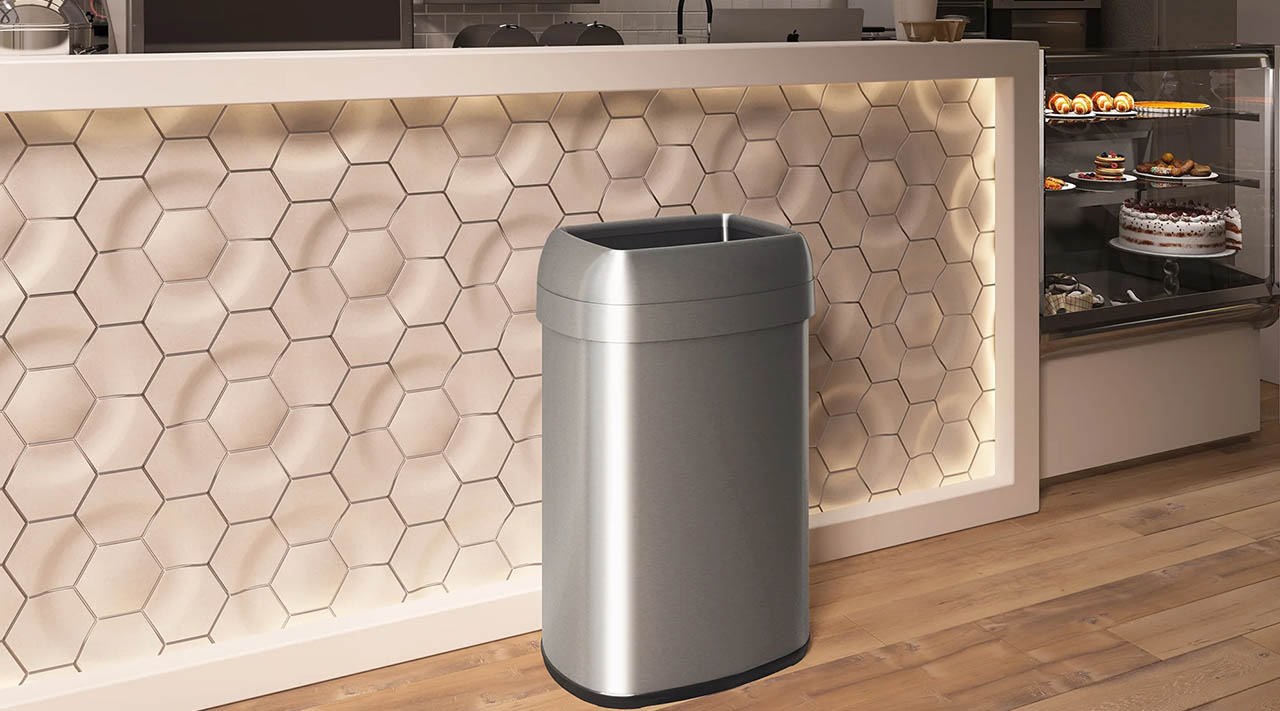
Choosing the Right Trash Can for Your Needs
Choosing the right trash can is essential for maintaining a clean, organized, and eco-friendly space. Whether for home, office, or public use, selecting a trash can that fits the space and meets your needs is a small decision with a big impact on functionality and aesthetics. By understanding the features, materials, and innovations available, you can make a choice that enhances waste management while aligning with modern sustainability goals.






